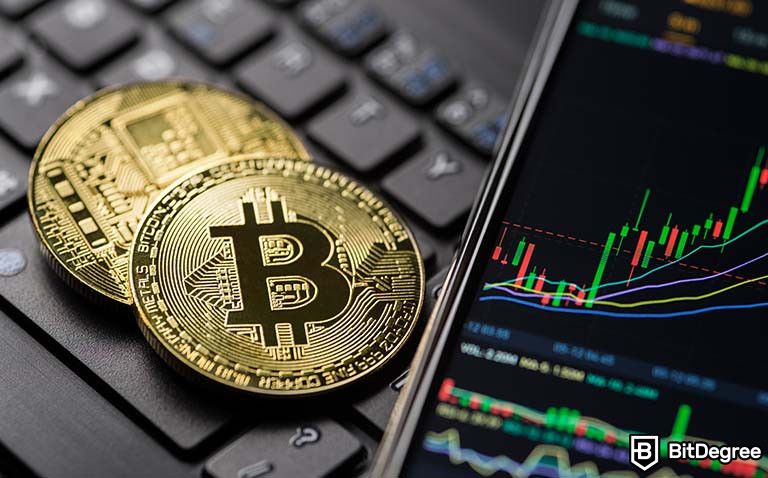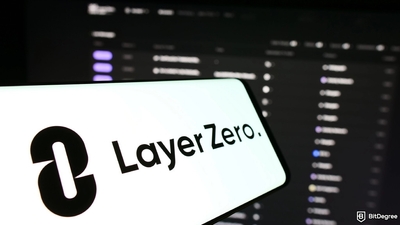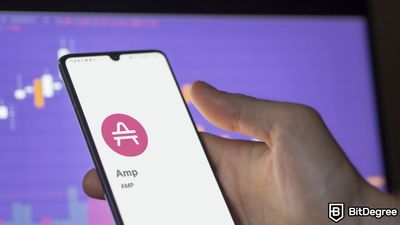Free Airdrop Season 7 is LIVE! Answer fun questions or do simple tasks to earn rewards from the $30K BitDegree prize pool. Participate Now ! 🔥
Imagine that you have $1000 worth of cryptocurrencies in your portfolio. You don’t want all of that crypto to sit idly, since the market is quite volatile, and the prices tend to swing a lot. Well, what if I told you that there’s a way to earn up to and over 20% APY (or simply - returns per year) on that crypto?
Sounds too good to be true? Well, this can be done with the magic of yield aggregators and Automated Market Makers. One of the most popular of such platforms is Curve Finance.
In this article, we’re going to talk about what is Curve Finance. Specifically, I’ll tell you about the platform, and answer questions such as how Curve Finance works!

Did you know?
Subscribe - We publish new crypto explainer videos every week!
What is Algorand? ALGO Coin Explained With Animations


Table of Contents
What is Curve Finance?
So, let’s take it from the top - what is Curve Finance?
Latest Deal Active Right Now:Head to BitDegree Missions, gather as many Bits as possible & claim your stake of the $30,000 Prize Pool! Don't waste your time & start collecting Bits by completing Missions and referring friends.
Essentially, Curve Finance is a dApp - a decentralized application that’s based on the Ethereum and Polygon networks. To be more specific, however, Curve is often referred to as a “DEX”, or an “AMM” - a decentralized exchange, or an Automated Market Maker, respectively.
A lot of difficult terms, huh? We’ll break them down right now, but if you want to get a deeper understanding of these mentioned concepts, I highly advise you to go and check out the related articles that I've linked to above, before continuing on with this one - this will help you understand Curve Finance much better!

So, on your phone, you likely have a variety of different apps - a calendar, a calculator, Facebook, TikTok, and so on. Just like all of these are applications, dApps are kind of the same - the only difference is that dApps are decentralized, meaning, they are not owned by a single company or corporation.
Automated Market Making
Automated Market Making is a really complex financial topic, but to put it super-simple, AMMs can be seen as tools that help people perform trades (such as those with crypto) with an asset pool, instead of another person.

An example here would be this - if you have $100 worth of Ethereum, and want to trade it for an equivalent amount of Bitcoin, you could go and trade it on a traditional cryptocurrency exchange. However, what if there’s no one who wants to make that trade with you, at that time?
Well, in this case, AMMs come to the rescue - here, you can trade without issues, as long as the pool has enough funds within to support your trade.

Now, I know what you might be thinking - what does all of this crypto mumbo-jumbo have to do with Curve Finance? Well, let’s circle it back to the topic at hand.
In order for AMMs to exist, they need investors - the funds in the pools don’t appear out of nowhere, after all! As you trade and interact with the pool, you will pay fees - these fees will then be distributed to investors, as rewards for their contributions!
Is it coming together now?
By becoming an investor in an Automated Market Maker, you will contribute to one of the many asset pools, and as other people trade with that pool, you’ll start receiving rewards. That’s exactly how Curve Finance works!
A Detailed Look at How Does Curve Finance Work
As you might remember from the beginning of the article, I’ve mentioned that Curve Finance is also often considered to be a DEX - or, a decentralized exchange.
Decentralized exchanges are places where people go to trade cryptocurrencies anonymously. Using a DEX, you’ll be able to trade crypto without revealing your identity! It’s an advanced topic, so if you’d like to learn about it more in-depth, make sure to visit our list of the best decentralized exchange platforms on the current market!
Now, which is it then? Is Curve Finance a decentralized exchange, or an Automated Market Maker? Well, it’s both, actually! Curve Finance does allow you to come onto their website, and swap different cryptocurrencies - specifically, stablecoins (more on these later).

However, if trading stablecoins isn’t your cup of tea, then you can use the alternative features of the platform, such as yield earning.
Yield Aggregation on Curve Finance
Think of Curve as a special library - one where you can bring in and leave your books, so that other people could read them. Everyone who wants to read your book, however, must pay a small fee to the librarian, who will then give you that fee as a reward. Simple!
With Curve Finance, you lock your cryptocurrencies into a pool, and start earning passive income, without doing anything else! The interesting thing here, however, is that Curve didn’t start out as a widely-used crypto AMM - at the beginning, it wasn’t even called Curve Finance, to begin with!
During its inception, Curve Finance was called StableSwap. That’s because it was only concerned with decentralized stablecoin swaps.
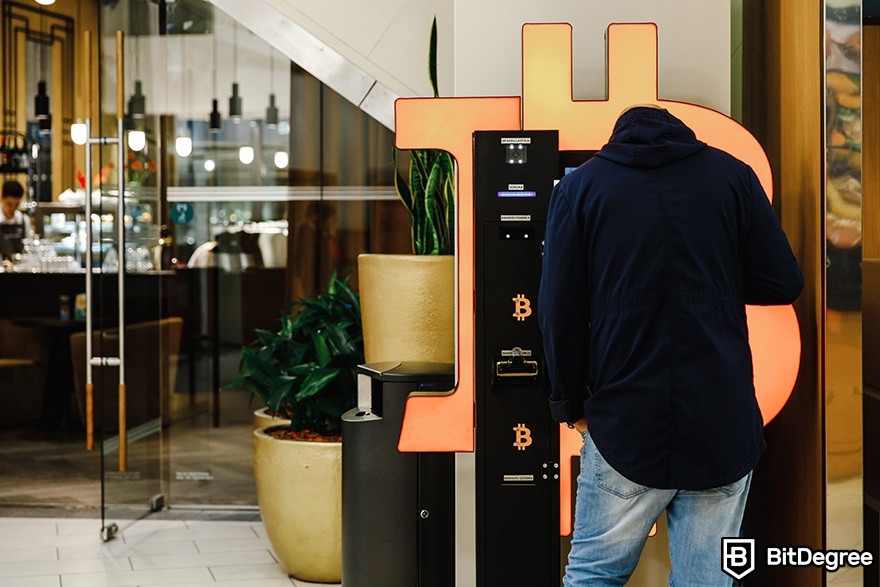
Stablecoins are cryptocurrencies that have a fixed price of $1. So, no matter what sort of stablecoin you might take, they should all be priced the same - $1. However, this is only true in theory, and on mainstream, centralized exchanges.
What if you want to trade some stablecoins anonymously, and in a decentralized way? Well, you would go to AMMs and DEXs! Again, if you’re feeling lost, I urge you to go check out our other articles on these topics! As you might remember from earlier, I’ve already told you that Curve Finance does have both AMM and DEX functionality.
The problem here is that decentralized exchanges and AMMs could have limited supplies of stablecoins. This would ramp up their price, and make these trades rather illogical.
Imagine that you have $100 worth of the USDT stablecoin. You want to swap it to USDC, another very popular stablecoin. However, in return, you only get $80 worth of USDC, since there was a major shortage of the coin on that AMM.
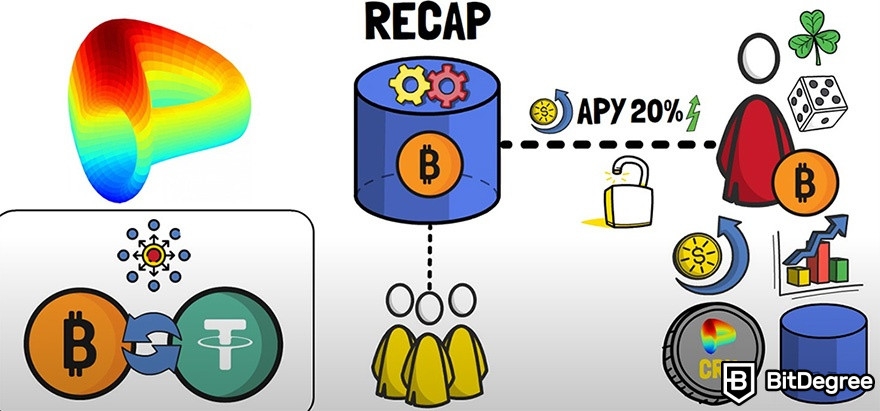
The $20 that you’ve lost is called “slippage”. As you can probably guess, that’s not exactly ideal! This is why a group of people came together in order to search for a way to reduce this slippage, as much as possible - the result was StableSwap.
As time went on, StableSwap started supporting other cryptocurrencies, and rebranded to Curve Finance. Today, the platform stands tall as one of the top-rated AMMs and APY projects on the decentralized finance market!
Who’s behind Curve Finance, though? Who manages the project, in the first place?
Curve Finance - Powered by the DAO Model
Well, Curve Finance is actually considered to be a DAO - a Decentralized Autonomous Organization. To put it simply, the Curve (or, CRV) token holders are responsible for voting on decisions regarding the project - its updates, developer hiring, the direction of the platform, and so on.

If you’d like to learn about DAO, do make sure to check our dedicated description of the concept. Also, if you’re enjoying this article so far, make sure to check out the rest of our tutorials - you'll be able to both learn some specific skills, as well as educate yourself about the world of crypto, in general!
So, let’s recap what we’ve figured out so far - Curve Finance is a decentralized exchange, and an Automated Market Maker. Investors come to the platform, and lock their idle cryptocurrencies into one of the available pools. Each pool has its own, dedicated APY - as other people use your funds to trade and interact with the AMM, you will earn passive returns that can generally be taken out at any point in time.
APYs can range up to 20%, and even more, if you’re lucky and aren’t afraid to take on some more risk! Curve Finance has base APYs, as well as rewards that can be paid out in CRV tokens. All of these numbers will vary daily, and depending on the pool that you want to delegate your cryptocurrencies to.
Using Curve Finance
Continuing on with the article, now that you know all about Curve Finance, you might be interested in actually trying the platform out for yourself. To tell the truth, though, starting out with Curve can seem quite intimidating and confusing!
At some point, I might create a detailed, step-by-step guide on how to get started with Curve Finance. For now, though, let’s just explore the basics.
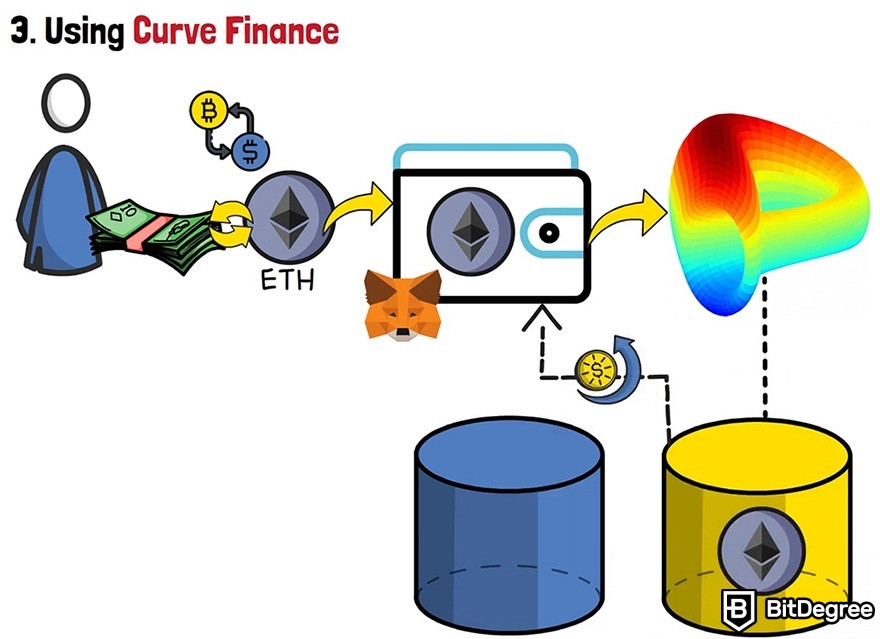
So, what you’ll need to get started with earning yield on Curve Finance is Ethereum. You should visit a cryptocurrency exchange platform, and purchase some ETH with USD or EUR. After that, your next step is to transfer that ETH to a dedicated, separate digital cryptocurrency wallet, such as MetaMask.
Once you have your Ethereum safe and sound in your wallet, you will then need to go to Curve Finance, and start exploring the available yield pools. After you find one that suits your needs and expectations, you’ll be able to start earning passive crypto gains by delegating your Ethereum to the pool!
The entire process can be as hard or as simple as you make it out to be! If you’d like, you can use multiple different cryptocurrencies, analyze all of the available tools on the website, and optimize your yield farming experience to the T. Once again, if that’s something that sounds interesting to you, let me know!
Conclusions
So, that’s about it for this article - these are the basics of Curve Finance! I do hope that you’ve learned a lot about what Curve is and, more importantly, how it works, at least in a general sense. What do you think - is Curve Finance an interesting project? Or is it overhyped? Let me know!
Also, if you're looking for a reliable place where to get yourself some cryptocurrency, before getting started with yield farming, you may want to check out the best crypto exchanges on the market. To complement that, do also take a look at the best hardware wallets, too - after all, you'll probably want to keep your newly-acquired assets safe and sound!
The content published on this website is not aimed to give any kind of financial, investment, trading, or any other form of advice. BitDegree.org does not endorse or suggest you to buy, sell or hold any kind of cryptocurrency. Before making financial investment decisions, do consult your financial advisor.

